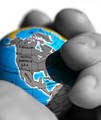Recycling saves money, landfill space, and energy. If you are unsure about the recycling policies in your area, contact your local government in Brazil or anywhere other country.
Recyclable Material
Aluminum and steel cans
Cardboard
Glass
Paper and Newspaper
Telephone books
Plastic
Process for Recycling
You put your recyclable materials in a bin to be picked up for recycling.
These items are sorted into groups and cleaned.
The cleaned items will be sold to a manufacturer.
The manufacturer processes these materials and creates new products out of them.
You purchase the new recycled items
How are Newspapers Recycled?
At the paper mill, de-inking facilities separate ink from the newspaper fibers through a chemical washing process. A slusher turns the old paper into pulp, and detergent dissolves and carries the ink away. Next, screens remove contaminants like bits of tape or dirt. The remaining pulp is bleached and mixed with additional pulp from wood chips to strengthen it. The watery mixture is poured onto a wire, a continuously moving belt screen which allows excess moisture to drain through. By the time the mixtures gets to the end of the belt, it's solid enough to be lifted off and fed through steam-heated rollers which further dry and flatten it into a continuous sheet of paper. This paper machine produces finished newsprint at the rate of 3,000 feet per minute.
How is Cardboard Recycled?
At the mill, the corrugated is pulped and blended with additional pulp from wood chips. Broken, thus shorter and weaker, old fibers are blended with the new pulp to make the medium. Recycled paper fibers and new pulp are blended to make linerboard. Then the medium and the linerboard are shipped to a boxboard plant, where the manufacturing process is finished. The medium is corrugated by specially-geared machines, the linerboards are glued on, and the resulting flat pieces, called mats, are trimmed to size and creased along a pattern of folds. The mats are shipped flat to customers who set them up into boxes. Then the boxes are used to package products for shipping.
How is Glass Recycled?
At the plant, a mechanical processing system breaks the glass into small pieces called cullet. Magnets, screens and vacuum systems separate out metals, labels, bits of plastic, metal rings and caps. The cullet then is blended in measured amounts with silica sand, soda ash, and limestone, and placed in a furnace which melts it into molten glass.
How are Cans Recycled?
Meanwhile, the liquid with the tin, a salt solution called sodium stannate, is filtered to remove scraps of paper and garbage. Then it's chemically treated to eliminate other metals. Next, the solution is transferred to an electrolysis bath which works like a battery in reverse. When electricity is applied, tin forms on one of the plates in the solution. After the plate is covered, the tin is melted off and cast into ingots.


Nenhum comentário:
Postar um comentário